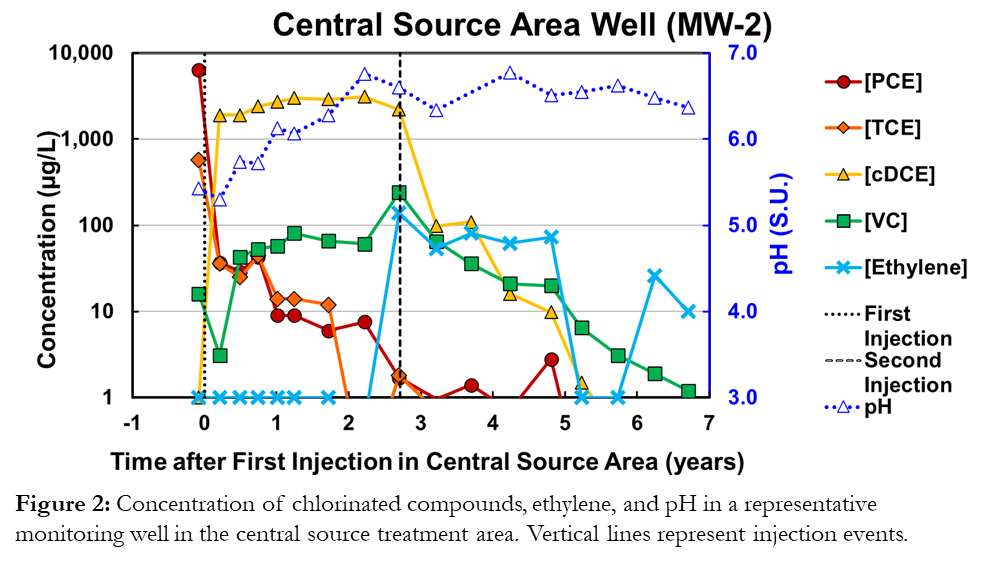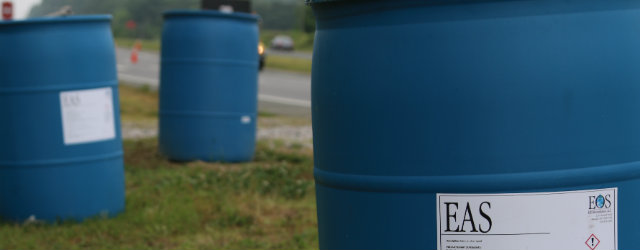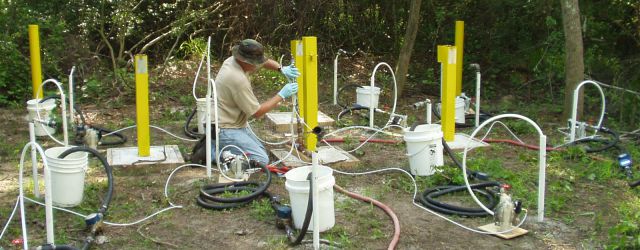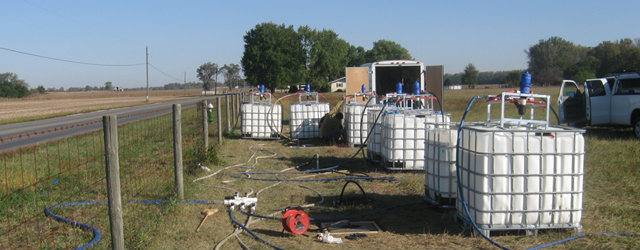Results from this site and many others show that IBSR remains a strong option to treat sites in an efficient and affordable way, even when the conditions do not seem favorable for biological growth. EOS® Pro, CoBupH™, and BAC-9 bioaugmentation cultures can provide long-lasting substrate, adequate nutrients, and a pH-optimizing buffer to ensure successful site treatment.
Sulfate-Enhanced Bioremediation of BTEX
EOS Admin2020-04-27T10:53:00-04:00Sulfate-Enhanced Bioremediation This case study describes using sulfate-enhanced bioremediation to stimulate anaerobic degradation of hydrocarbons in groundwater under sulfate-limiting conditions PROBLEM A former gas station in North Carolina contaminated groundwater with BTEX from a UST basin. The site is now in the median of a busy four-lane highway. Residents within 250 [...]
Using CoBupH™ to Adjust Aquifer pH
EOS Admin2017-09-01T13:10:15-04:00Using CoBuphMg™ to Adjust Aquifer pH This case study demonstrates how adding CoBupHMg™, a colloidal buffer, can control and adjust aquifer pH for enhanced bioremediation. PROBLEM A US Government site had elevated TCE. Low aquifer pH stalled in situ bioremediation. PROJECT GOAL Inject organic substrate in the aquifer to enable [...]
Permeable Reactive Barriers Treat TCE
EOS Admin2017-09-07T13:22:39-04:00Permeable Reactive Barrier to Treat Trichloroethene Plume This case study demonstrates the effective use of permeable reactive barrier (PRB) technology with EOS® emulsified oil substrate injections to cut off TCE migration for enhanced bioremediation. PROBLEM A large manufacturer in Indiana needed to remediate a long plume of TCE-contaminated groundwater, threatening a river almost 2 [...]




